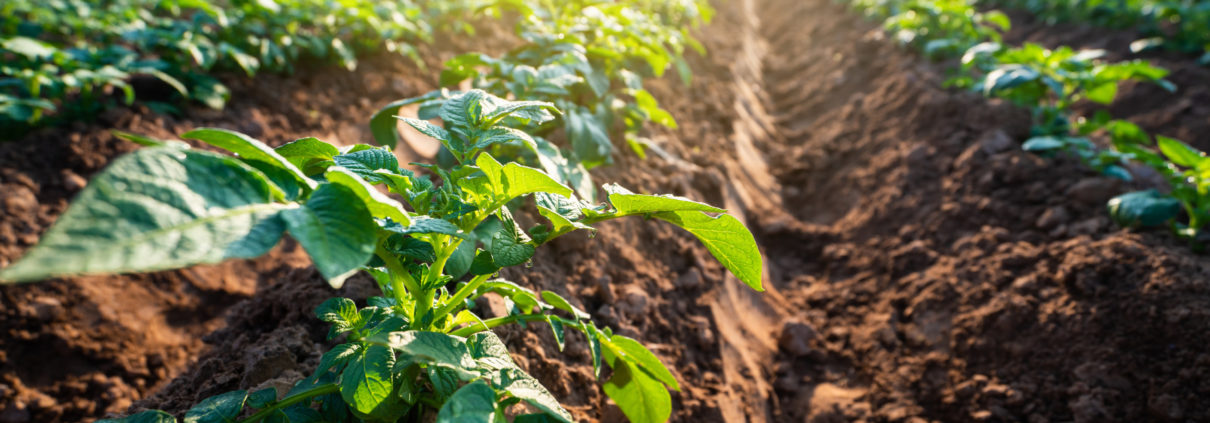
Home > Mirimichi Green Learning Center > Blog
Mirimichi Green Blog
Gather ideas and inspiration for growing your dream landscape. Get the latest tips, be updated on Mirimichi Green affairs, and learn more about our products here in Mirimichi Green Blog!
Ecolawn Applicator: A conversation with Daniel Coté
Superintendent Shannon Easter Shares Project Overview at Broken Sound Club Using Mirimichi Green
When to use a soil amendment versus fertilizer?
Mirimichi Green Launches Organic Granular Fertilizer 4-4-4
Peat Alternative During Shortage And Beyond
Lawn Winterization: Tips for Healthier, Greener Turf Next Spring
Lookout Central Region – Jeff Averitt joins Mirimichi Green
3 Alternatives to Roundup for the Landscape Professional
New Mirimichi Green Packaging
Mirimichi Green Launches New Soil Amendment Essential-G
COVID-19 Status
Mirimichi Green Invests In New Manufacturing Equipment
Mirimichi Green Introduces Soluble Microbial Powder Into Product Offering
Mirimichi Green Sales Team Expands To The West Coast
Mirimichi Green Sales Personnel Expands
Mirimichi Green Announces Carbon In All Liquid Products
Mirimichi Green Adds New Hires To Team
Get Rid Of Bugs With Mirimichi Green Pest Control
Spring Tips For Sod And Topdressing Applications
US Equestrian Federation Announces Mirimichi Green as an Official Sponsor
Golf Course Industry – Injecting Different Theories
Mirimichi Green Introduces Pest Control Product
How To Keep A Christmas Tree Fresh And Green
Urban Sustainability Is Growing
Simple Steps to Control Erosion On Project Sites
High Nitrogen Poses Risk To Environment
Successful Turf Management and Disease Control Methods
Launch of CarbonizPN DJ Fine Grade
Help Customers Avoid Soil Erosion and Runoff
Fall Is The Best Time To Improve The Soil
Post-Hurricane Harvey Insecticide Aerial Spray
Mirimichi Green Receives NCMEP Leadership Award
Top 8 Plants That Repel Bugs and Mosquitoes
Top 6 Ornamentals To Include In Fall Landscapes
Shannon Easter To Speak At 2017 Distinguished Ideas Summit
6 Factors To Keep In Mind About Artificial Turf Fields
The Top Problems And Solutions For Soil Compaction
Dog Spots Destroying Your Grass? Here’s What to Do.
How to make the best choice between sod, seed or hydroseed
New Reviews About Outstanding Turf At TIEC
How to Choose the Right Soil for You
The Top 6 Most Common Landscaping Mistakes
The Top 8 Myths About Gardening
Growing Plants That Will Help Attract Wildlife To Your Garden
How To Help Your Plants Fight The Stresses of Summer
5 Ways To Minimize Your Weed Growth
You Need To Know The Importance Of Organic Soil Matter
Top 10 Beautiful, Sustainable, and Eco-Friendly Landscapes
How To Know When To Aerate Your Lawn
5 Proven Ways to Save Water in Your Garden
Transforming Your Landscape to be Healthy and Sustainable
Mirimichi Green Announces Inaugural Sustainable Program Member Award
Singapore Open 2017 Guest Speaker
Mirimichi Green Tackles College Stadium
Mirimichi Green Goes International
Mirimichi Green Launches New Product
Mirimichi Green Personnel Expands
Mirimichi Green Makes Donation To The City of North Las Vegas
Mirimichi Green Saving Lawns in California.
Mirimichi goes to Congress
Mirimichi Green joins in the action at Tree Planting in Louisville KY
2024 USDA Hardiness Zone Changes
In November of 2023, the USDA updated its plant hardiness zone map for the first time since 2012 – not surprisingly, lots of places are warmer than they used to be.
A full 63% of Mirimichi Green customers saw a half-zone change or more. Mirimichi Green produced a guide to help our users in updated USDA Hardiness Zones.
How do I know if my USDA Hardiness Zone changed?
You can search the 2023 USDA Plant Hardiness Zone Map by zip code to see if your area has changed since 2012.
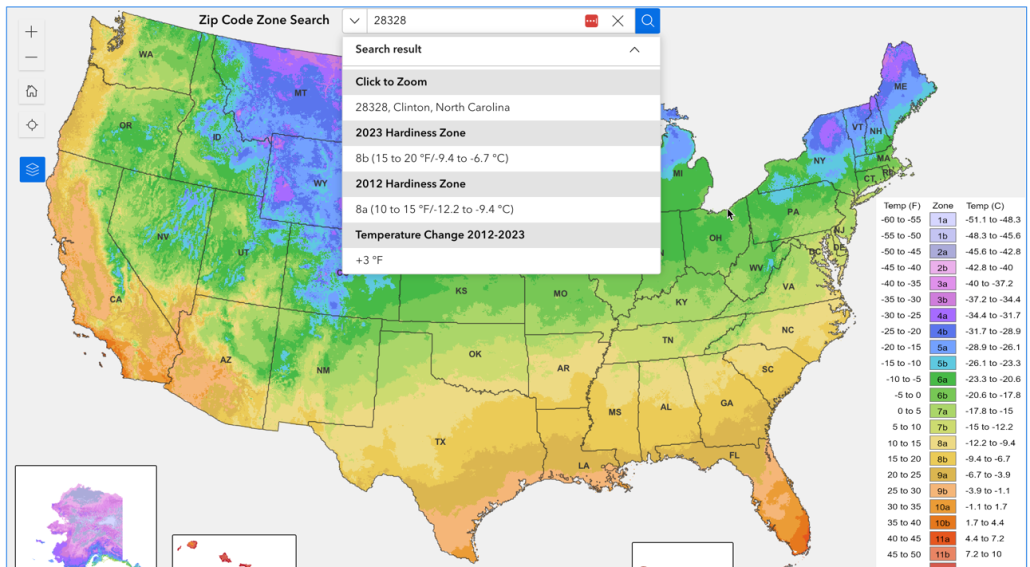
What can I do if my USDA Hardiness Zone changed?
If your zone changed but is still the same number, there’s probably not a lot you need to do, except start to prepare for things to continue getting hotter. As in the example above, Clinton, NC, changed from zone 8a to zone 8b, a halfzone. But the it’s still in zone 8.
If you moved up a number level, like from zone 7b to 8a, you may want to consider making some changes.
For new plantings:
Consider updating your list of go-to flowers, shrubs, and trees to varieties better suited to your current zone. For a list of examples, you can download our PDF below which describes some considerations if you moved up a number level. Please print and use the relevant page. We hope it’s helpful for your staff and customers.
For existing plants:
Improving soil conditions can go a long way in helping established plants continue to survive and even thrive in higher zones. Consider CarbonizPN Soil Enhancer to improve soil fertility and reduce water needs in an increasingly challenging climate.
What is the USDA Hardiness Zone Map?
The USDA Plant Hardiness Zone Map is a valuable resource for gardeners and landscapers in the United States.
The geographical map divides the country into zones based on the average annual minimum winter temperature. Each zone represents a range of temperatures and is useful for determining which plants are likely to thrive in a particular location.
1. Temperature Zones: The map is divided into zones defined by 10-degree Fahrenheit increments. These zones are further subdivided into “a” and “b” sections, each representing a 5-degree Fahrenheit difference.
2. Guidance for Planting: The map guides gardeners and landscapers in selecting plants that are most likely to survive the winter in their region. Plants are often labeled with their hardiness zone information.
3. Limitations: The zone guide certainly doesn’t account for everything. Limitations of the zone map include the impact of microclimates, soil conditions, summer heat tolerance, wind exposure, precipitation and water availability, local typography, season length, and extreme weather events.
The winner of our guessing game is…
The winner of our guessing game is...
A few weeks ago, we asked that you take a look at the pictures below and venture a guess as to how many bags of Lesco’s CarbonPro-G we made to get ready for you this spring’s demand.
Thanks to all who participated!
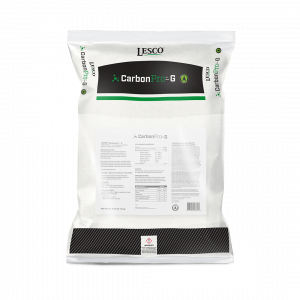
Congrats to winner Ray Kirby, CSSR out of Hudson, MA (branch 630), who had the winning guess of 50,000 bags.
Your candy is en route!
That’s 1,000 tons of Carbon Pro-G processed this winter, with more being produced each and every week.
Topdressing Cool Season Grasses versus Warm Season Grasses with CarbonizPN
Cool-season grasses, such as Kentucky bluegrass, tall fescue, and perennial ryegrass, are commonly found in the Northern United States. They thrive in cooler temperatures and have a growth spurt in spring and fall. These grasses are known for their dense, lush growth.
On the other hand, warm-season grasses, such as Bermuda grass, St. Augustine grass, and Zoysia grass, are commonly found in the Southern United States. They thrive in hot temperatures and have a growth spurt in summer. These grasses are known for their durability and ability to withstand heat and drought.
One major difference between cool-season and warm-season grasses is how they propagate. Most cool-season grasses are bunching grasses, meaning they grow in clumps and do not spread through rhizomes or stolons (Kentucky Bluegrass is a notable exception). This means that overseeding is often necessary to fill in bare spots and keep a dense lawn. Warm-season grasses, on the other hand, are spreading grasses and grow through rhizomes or stolons. This means that they can fill in bare spots on their own and do not require as much overseeding.
When it comes to maintenance, the needs of cool-season and warm-season grasses differ as well.
- For cool-season grasses, overseeding, topdressing, and aeration are important in the fall to encourage healthy root growth and prepare for the winter.
- For warm-season grasses, these tasks are typically done in the spring or early summer to prepare for the hot summer months.
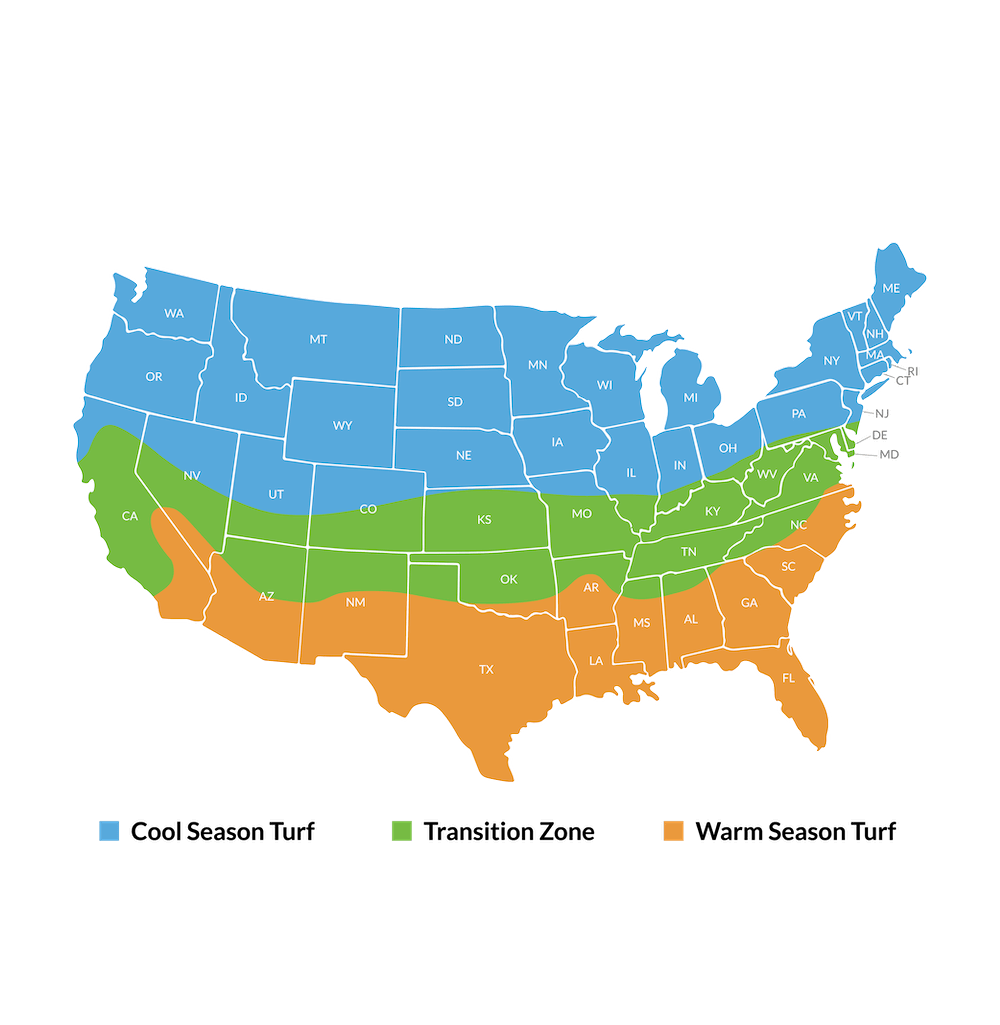
Turf Zone Map (Warm Season, Cool Season, and the Transition Zone)
Topdressing with products like CarbonizPN can provide benefits for both types of grasses, including improved soil health and nutrient uptake. Topdressing is often thought to be labor-intensive, but belt-driven equipment, like the Ecolawn Applicator, can make this process a breeze.
Overall, understanding the differences between cool-season and warm-season grasses is important for proper lawn maintenance and care. By knowing the unique needs of each type of grass, you can ensure a healthy and vibrant lawn year-round.
The Magic of Biochar: A Sustainable Solution for Modern Landscape Management
Introduction
As the CEO of Mirimichi Green, I am proud to be at the forefront of sustainable and innovative solutions for modern agriculture. One of our core ingredients is biochar, an incredible material that has been used for centuries to improve soil health and fertility. In this blog post, we will dive into the fascinating history of biochar, its characteristics, current trends, and an overview of the product landscape for companies producing biochar products.
A Brief History of Biochar
Biochar has a rich history that dates back over 2,000 years. Its origins can be traced to ancient Amazonian civilizations, where indigenous people created a highly fertile soil called “terra preta” (meaning “black earth” in Portuguese). By incorporating biochar into the soil, they were able to transform nutrient-poor, highly weathered soils into highly productive agricultural lands. This ancient wisdom has been rediscovered in recent years, sparking a renewed interest in biochar and its potential to address modern agricultural challenges.
What Makes Good Biochar and Less Good Biochar?
Biochar is created through a process called pyrolysis, which involves heating organic matter (such as wood, crop residues, or manure) in a low-oxygen environment. The quality of biochar can vary greatly depending on the feedstock and production process. Here are some key factors that determine the quality of biochar:
- Feedstock: The type of organic material used to produce biochar plays a significant role in its final properties. High-quality biochar is typically derived from clean, uncontaminated sources such as wood, agricultural residues, or dedicated energy crops. Low-quality biochar, on the other hand, may be produced from materials containing contaminants or high levels of ash, which can negatively impact its effectiveness in soil.
- Pyrolysis temperature: The temperature at which the organic material is heated during pyrolysis can affect the structure and properties of the resulting biochar. Higher temperatures generally yield biochar with higher carbon content, increased porosity, and greater stability in the soil. Lower temperatures may result in less stable biochar with lower carbon content.
- Processing and activation: High-quality biochar may be further processed to enhance its properties, such as activation with steam or chemical treatments. These processes can increase biochar’s surface area, making it more effective at retaining nutrients and water in the soil.
Current Trends in Biochar
There has been a surge in interest and research on biochar in recent years, driven by its potential to address various agricultural and environmental challenges. Some of the current trends in biochar include:
- The Magic of Biochar: A Sustainable Solution for Modern Landscape Management: Biochar’s ability to sequester carbon in the soil has garnered significant attention as a potential strategy for mitigating climate change. By locking away atmospheric carbon dioxide in a stable form, biochar can help reduce greenhouse gas emissions.
- Soil health and productivity: Biochar has been shown to improve soil fertility, increase water retention, and promote beneficial microbial activity. As a result, farmers and gardeners around the world are increasingly adopting biochar as a soil amendment to boost crop yields and enhance soil health.
- Waste management: The production of biochar can help address waste management challenges by converting agricultural, forestry, and other organic waste materials into a valuable soil amendment. This not only reduces waste volumes but also helps prevent the release of greenhouse gases from decomposing organic matter.
- Water and air pollution control: Biochar has been demonstrated to effectively remove pollutants from water and air, making it an attractive option for environmental remediation efforts. Its porous structure and large surface area enable biochar to adsorb contaminants, improving water and air quality.
Analysis of the Current Product Landscape for Biochar
As the demand for biochar grows, an increasing number of companies are entering the market to offer various biochar products. The current product landscape can be broadly categorized into the following segments:
- Raw biochar: This category includes biochar products that are sold in their most basic form, without any additional processing or additives. Raw biochar is typically marketed for use in agriculture, horticulture, and landscaping applications.
- Enhanced biochar: Some companies are offering biochar products that have been enhanced with additional nutrients, minerals, or microbial inoculants to improve their performance as soil amendments. These products are designed to provide added benefits, such as increased plant growth, improved nutrient availability, and enhanced soil biological activity.
- Customized biochar blends: To cater to the specific needs of various industries and applications, some companies offer customized biochar blends that combine biochar with other soil amendments, such as compost, peat, or vermiculite. These blends can be tailored to address specific soil conditions.
The Main Biochar Companies
Please note that the current product landscape is constantly evolving, and some new players may have entered the market. Here are a few prominent companies in the biochar industry and their offerings as of this writing:
- Mirimichi Green: Our own company, Mirimichi Green, produces high-quality biochar products derived from sustainably sourced wood waste. Our signature product, CarbonizPN, is an enhanced biochar that combines activated biochar with organic nutrients and beneficial microbes, making it an ideal soil amendment for various agricultural, horticultural, and landscaping applications.
- Cool Planet: Cool Planet’s Cool Terra® biochar products are made from sustainably sourced biomass and are designed for use in agriculture, turf, and horticulture. They offer both raw and enhanced biochar options, with some products containing added nutrients and microbial inoculants to promote plant growth and soil health.
- Biochar Supreme: This company offers a range of biochar products under their Black Owl Biochar™ brand. Their offerings include raw biochar, as well as blends with compost and other soil amendments. Biochar Supreme’s products cater to various applications, from agriculture and gardening to environmental remediation.
- Pacific Biochar: Pacific Biochar offers a variety of biochar products sourced from sustainably managed feedstocks. Their offerings include raw biochar, biochar-compost blends, and biochar-based soil amendments for different agricultural and horticultural applications. Pacific Biochar also provides custom biochar solutions tailored to meet specific client needs.
- Wakefield Biochar: Wakefield Biochar is known for producing high-quality biochar products suitable for agricultural, horticultural, and environmental applications. They offer both raw biochar and biochar blends, including a product called Soil Reef, which combines biochar with worm castings and compost for an enhanced soil amendment.
- European Biochar Foundation (EBF): As a non-profit organization, the EBF is committed to promoting the responsible production and use of biochar in Europe. They offer a certification program called the “European Biochar Certificate,” which sets quality standards for biochar products in the region. Certified biochar products in Europe adhere to these standards, ensuring high quality and sustainability.
In comparing these companies and their products, factors to consider include the quality and sustainability of the feedstocks used, the production methods employed, the presence of added nutrients or microbes, and the specific applications for which the biochar is designed. As a consumer or business owner, it’s essential to carefully evaluate each product and company to determine which biochar solution best aligns with your requirements, values, and sustainability goals.
Conclusion
At Mirimichi Green, we are passionate about providing sustainable solutions for modern agriculture, and biochar plays a pivotal role in our mission. We understand that navigating the world of biochar can be complex, and we are here to help you make informed decisions that align with your needs and goals.
As the CEO of Mirimichi Green, I am personally invested in fostering a deeper understanding of biochar and its numerous benefits. If you have any questions about biochar or would like to discuss how our products can support your agricultural, horticultural, or environmental projects, please do not hesitate to reach out to me directly. I am always happy to engage in meaningful conversations and help you find the best solution for your unique requirements.
Together, let’s continue to explore the potential of biochar and its ability to revolutionize sustainable agriculture and environmental stewardship.
Russ Britton
When to use a soil amendment versus fertilizer?
In the battle of soil amendments v. fertilizers, it’s important to note that these products serve different purposes in gardening and agriculture. The decision to use a soil amendment or a fertilizer depends on the specific needs and conditions of your soil and plants. Here’s a general guideline:
Soil Amendments
Soil Amendments: Soil amendments are substances added to improve the physical properties of the soil, such as its structure, drainage, water-holding capacity, and nutrient availability. They are usually used to enhance soil fertility in the long term and provide a favorable environment for plant growth. Common soil amendments include:
– Compost: Adds organic matter, improves soil structure, and enhances nutrient retention.
– Peat moss: Improves water-holding capacity and aeration in sandy soils.
– Vermiculite or perlite: Enhances soil drainage and aeration.
– Gypsum: Helps improve soil structure in heavy clay soils.
Soil amendments are particularly beneficial when dealing with poor-quality or degraded soils, as they gradually improve soil health and fertility over time.
Fertilizers
Fertilizers: Fertilizers are substances containing essential plant nutrients that are added to the soil to provide immediate nutrition to plants. They are used to address specific nutrient deficiencies and promote healthy plant growth. Fertilizers come in different formulations, such as granular, liquid, or slow-release, and provide concentrated doses of specific nutrients, such as nitrogen (N), phosphorus (P), and potassium (K), as well as micronutrients.
Fertilizers are typically used when plants exhibit signs of nutrient deficiencies, such as yellowing leaves or stunted growth. They are also useful during periods of rapid growth or high nutrient demand, such as flowering or fruiting stages. Fertilizers provide quick results, but excessive or improper use can lead to nutrient imbalances, environmental pollution, or damage to plants.
In summary, use soil amendments when you want to improve overall soil quality and long-term fertility, while fertilizers are suitable for addressing immediate nutrient deficiencies or promoting vigorous growth during specific plant stages. It’s essential to assess your soil’s condition, perform soil tests to identify deficiencies, and consider the specific needs of your plants before deciding whether to use a soil amendment or a fertilizer.
Learn More about Soil Health
To learn more, check out our webinars on Soil Health or see Soil Amendments and Fertilizers for product information.
Mirimichi Green Launches Organic Granular Fertilizer 4-4-4
03/01/2023 – Castle Hayne, NC – Mirimichi Green has expanded its granular product line with a new, organic granular fertilizer with biology called 4-4-4 Organic Granular Fertilizer. The 4-4-4 Organic Granular Fertilizer is OMRI Listed and contains all organic ingredients and beneficial soil biology. Previously, Mirimichi Green only supplied liquid fertilizers.
Mirimichi Green is constantly researching and testing new ingredients to bring customers the best and most effective products on the market. Keeping sustainability and soil health at the forefront of every product developed, Mirimichi Green brought forth a completely organic fertilizer that can be used on any soil type and landscape. From turf to vegetable gardens, the 4-4-4 Organic Granular Fertilizer gets nitrogen, phosphorus, potassium, iron, calcium, and a wide range of beneficial microbes into the soil for plants to easily digest. By removing consistent synthetic fertilizer feedings, the plant finds what it needs in the soil and consumes the easily digestible organic fertilizer nutrients.
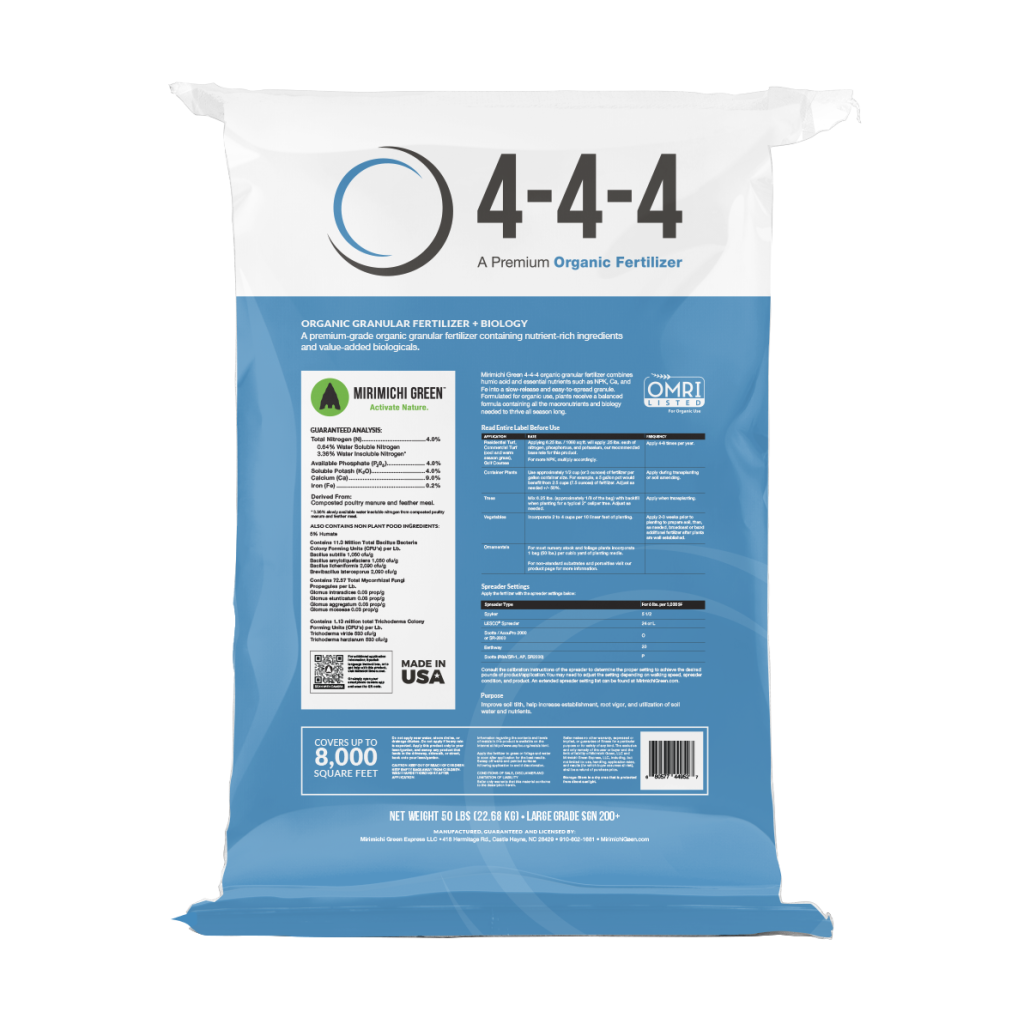
It is ideal for any landscape or planting application seeking a safe, sustainable, and organic option. The 4-4-4 Organic Granular Fertilizer can be used for all residential and commercial turf establishments, container plants, vegetables/gardens, ornamentals, and trees. Some of the benefits include:
- OMRI Listed
- Increases germination
- Enhances plant vigor
- Provides fast green-up and recovery
- Increases nutrient uptake (CEC)
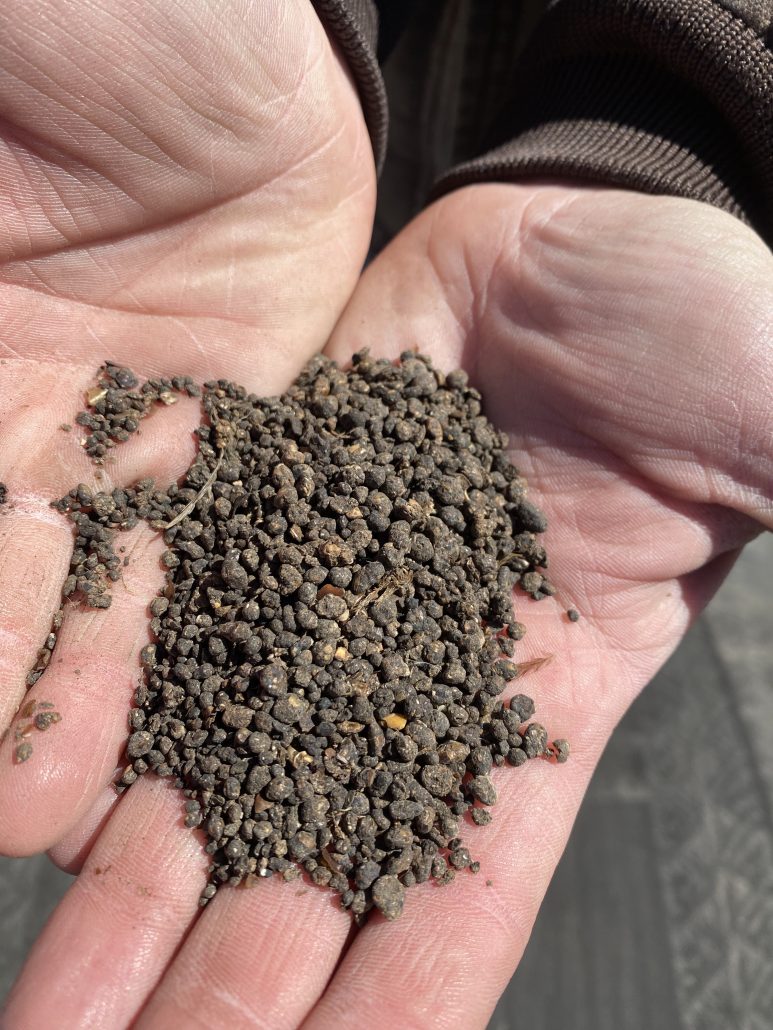
The organic fertilizer’s consistency is ideal for spreading in any standard push-behind spreader or by hand depending on the application. The prill size is similar to a synthetic fertilizer and goes out easily with no agitator or additional equipment needed.
More information about Mirimichi Green’s 4-4-4 Organic Granular Fertilizer such as application rates can be found here.
To order online, click here.
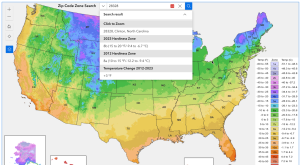
2024 USDA Hardiness Zone Changes
In November of 2023, the USDA updated its plant hardiness zone map for the first time since 2012 – not

The winner of our guessing game is…
Mirimichi Green has been hard at work all winter long making some of the finest biochar-based soil amendments on planet Earth!

Topdressing Cool Season Grasses versus Warm Season Grasses with CarbonizPN
Cool-season grasses, such as Kentucky bluegrass, tall fescue, and perennial ryegrass, are commonly found in the Northern United States. They
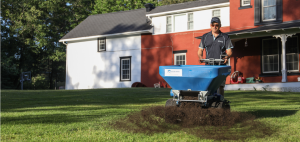
Ecolawn Applicator: A conversation with Daniel Coté
In the ever-evolving world of landscaping, innovation and adaptability are key. We recently sat down with Daniel Coté, a landscaper turned global manufacturer, who shared the inspiring journey of Ecolawn, the challenges faced, and how the company is addressing the needs of today’s landscapers.
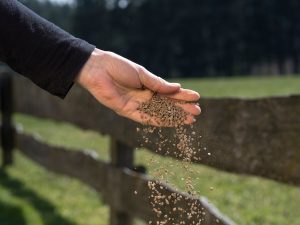
Organic Fertilizer and Biostimulant Evaluation Guide
When comparing different organic fertilizer and biostimulant products, consider the criteria in our product evaluation guide.

Superintendent Shannon Easter Shares Project Overview at Broken Sound Club Using Mirimichi Green
Shannon Easter, the superintendent at the Broken Sound Club in Florida, discusses the success Mirimichi Green products made during maintenance,
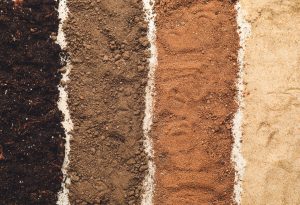
Soil Amendment Product Evaluation Guide
When comparing different soil amendment products, consider the criteria in our product evaluation guide.
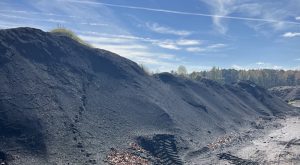
The Magic of Biochar: A Sustainable Solution for Modern Landscape Management
One of our core ingredients is biochar, an incredible material that has been used for centuries to improve soil health and fertility. In this blog post, we will dive into the fascinating history of biochar, its characteristics, current trends, and an overview of the product landscape for companies producing biochar products.
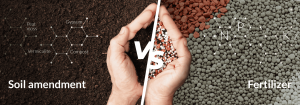
When to use a soil amendment versus fertilizer?
In the battle of soil amendments v. fertilizers, it’s important to note that these products serve different purposes in gardening